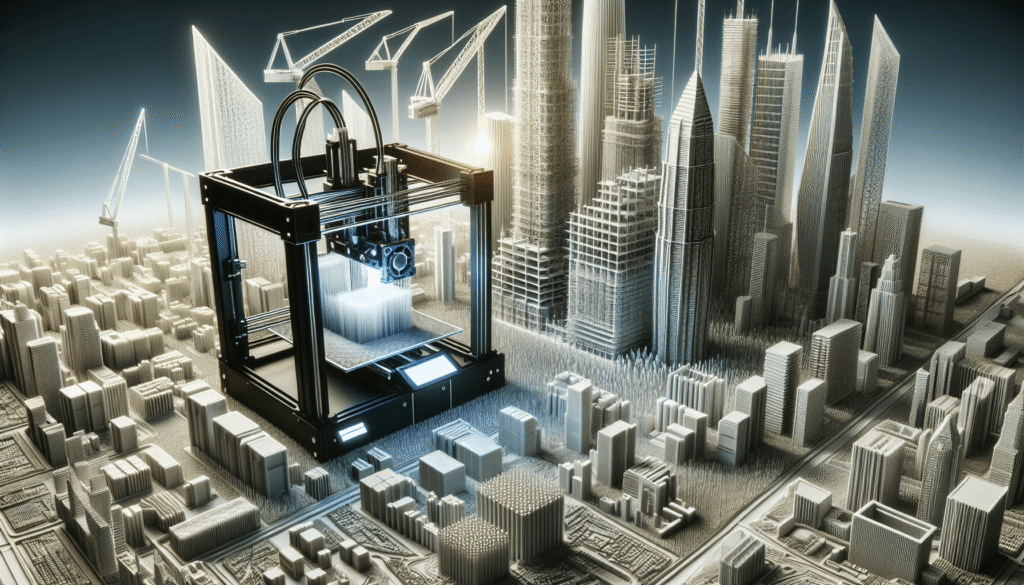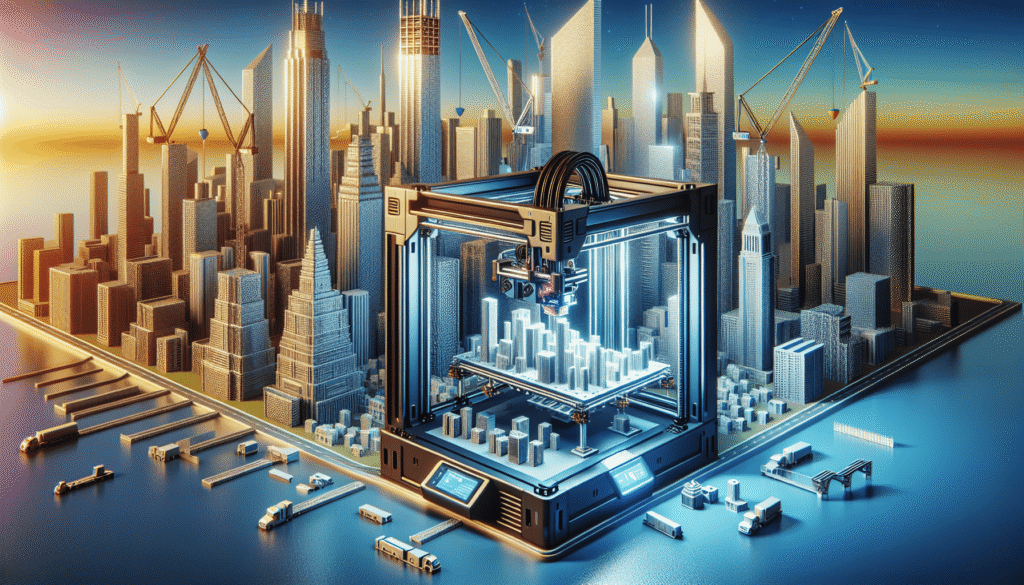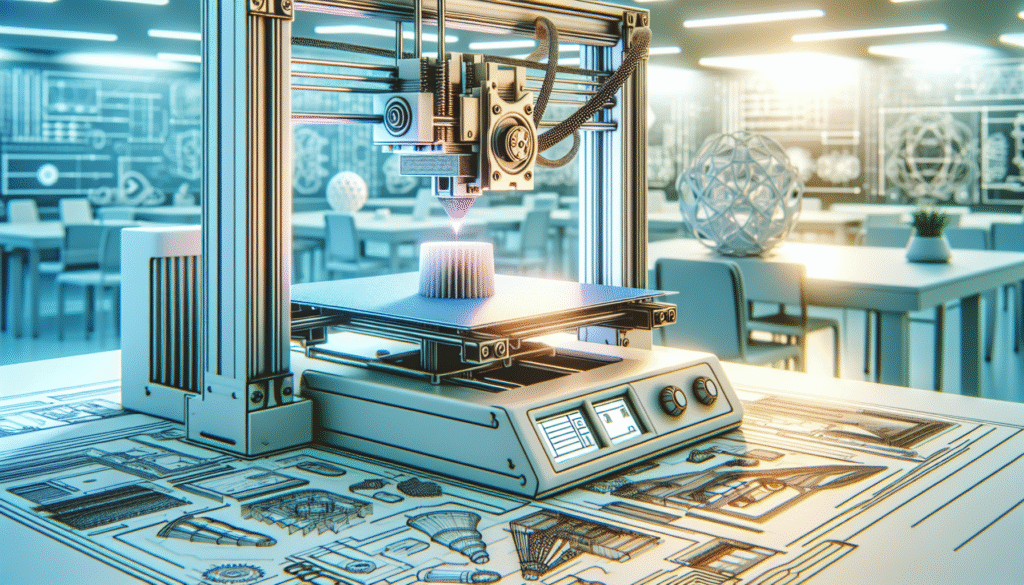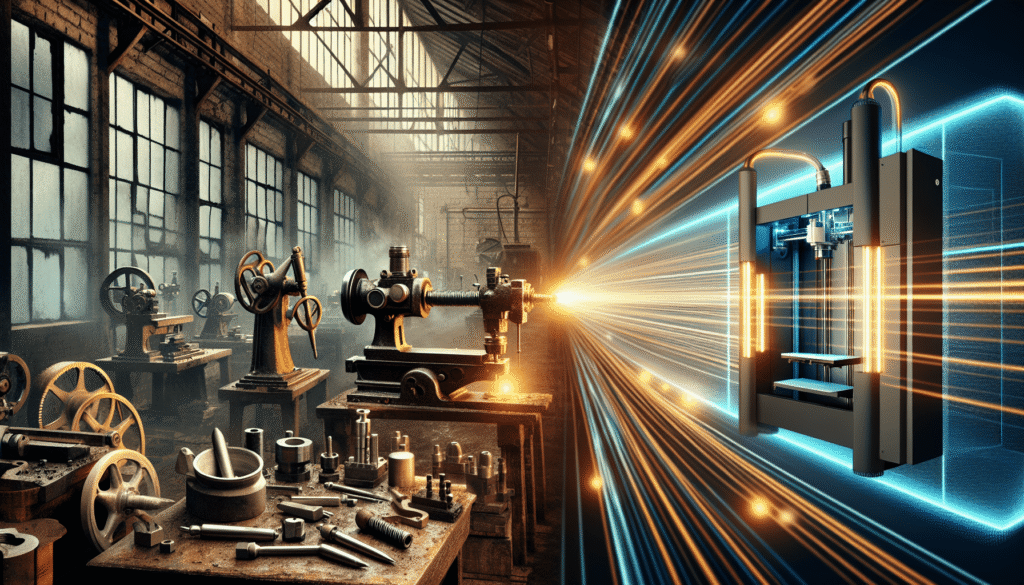What if I told you that the solution to housing crises and spiraling construction costs could lie in a device that looks more like something from a sci-fi movie than a construction site? I’m talking about 3D printing, and it is not the tiny plastic models you might remember from back in the day, but enormous machines capable of constructing the walls of houses in just hours. Allow me to share this tale of innovation and practical magic.

The Dawn of Construction 3D Printing
Picture yourself on a construction site, not filled with the noise of hammers and saws but the gentle hum of a printer. Buildings, once the domain of bricklayers and carpenters, are now emerging from layers of extruded material, almost like a loaf of bread rising from dough. This is the reality of construction 3D printing, a technology which, until recently, seemed as distant as flying cars.
How Does It Work?
So, what’s the deal with this technology, really? At its core, construction 3D printing works by depositing layers of material—sometimes concrete or composite mixtures—guided by a digital blueprint. These repetitive layers are precisely laid down by machines that outperform traditional methods when it comes to speed and efficiency. Think of it as icing a cake, but on a far grander scale.
Materials Used in Construction 3D Printing
Let’s pretend for a moment that I am whipping up a batch of cookies. Just how I’d need flour, eggs, and sugar, construction 3D printing has its own ingredients. Among these are:
- Concrete: The most common material, known for its strength and availability.
- Plastic Composites: Lightweight and versatile, often employed for non-structural components.
- Ceramic-Based Mixtures: Used for their aesthetic appeal and thermal properties.
Here’s a quick view:
| Material | Strengths | Typical Uses |
|---|---|---|
| Concrete | Durable, readily available | Structural frameworks |
| Plastic Composites | Lightweight, versatile | Non-structural elements |
| Ceramic Mixes | Aesthetic, good thermal properties | Decorative features |
The Behemoths Among Printers: Enter Large-Scale Projects
Let’s meander through the world of large-scale 3D printing projects, where the phrase “Go big or go home” has never been truer. Construction 3D printing isn’t just for building quaint, tiny homes; it’s now stepping up to tackle the colossal. From multi-story buildings to expansive complexes, this tech is stamping its influence on significant projects globally.
Real-World Applications
Ever heard about apartment blocks being printed rather than built? No? Let me illuminate you. Major projects, such as apartment buildings in China and office spaces in Europe, have had their frameworks constructed through 3D printing. The potential for urban development is as vast as it is intriguing.
Case Study: The Dutch Bridge Project
Consider a bridge in the Netherlands, not crafted by traditional means, but instead ‘printed’ from concrete. It’s like those paper bridges you built as a child, only real. The speed and precision with which it was produced have turned heads worldwide.
The Potential Benefits
Why, you might ask, should we care? Ah, the possibilities! Lower costs, reduced waste, and faster build times are the headlining benefits. Let’s lay them out:
- Cost Efficiency: Reduced material waste and lowered labor costs.
- Speed: Building times shrink significantly.
- Sustainability: Less waste means fewer demands on our planet’s resources.

Addressing the Skeptics: Challenges and Considerations
Now, it’s not all sunshine and rainbows. With every groundbreaking advance comes a set of hurdles. Skepticism and hurdles abound, and I’ll bet your mind is brimming with questions right about now.
Current Limitations
For all its promise, construction 3D printing is not without limitations. Concerns about the structural integrity over time and limitations with complex architectural designs often arise. Challenges include:
- Material Limitations: Not all materials are suitable for printing.
- Structural Limits: Height and load requirements can restrict some projects.
- Regulatory Barriers: Building codes need updates to accommodate this new technology.
The Way Forward: Adapting and Overcoming
The challenges also hold the secret keys to the next wave of advances. With each setback, a new learning opportunity arises. Initiatives are underway to develop new mixtures and modify building codes to be more inclusive of 3D printing methods. It’s a journey of evolution, rather than revolution alone.
The Broader Impacts: A Glance into the Future
Imagine a future where entire cities sprout like mushrooms, thanks to construction 3D printing. The possible impacts are both exciting and profound, touching everything from housing affordability to job creation. Who knew that printers could influence society to such a degree?
Transforming the Workforce
Before you start worrying about robots taking over, consider this: the rise of construction 3D printing doesn’t eliminate jobs; rather, it transforms them. It’s like the advent of the telephone, which didn’t obliterate written communication—it diversified it.
Enhancing Sustainability Practices
With climate change concerns knocking louder than ever, the environmental benefits of 3D printing can’t be ignored. By minimizing waste and optimizing resource use, construction 3D printing plays an important role in sustainable building practices.
Your Thoughts: The Conversation Continues
Now, as we stand on the edge of this technological leap, I’m curious: has your understanding or perspective shifted on the role of 3D printing in construction? The conversation doesn’t end here. Instead, it’s ongoing, weaving through the sociocultural fabric of our world.
In a nutshell, as construction 3D printing continues to gain traction, the implications are vast and varied. From remarkable efficiencies to unprecedented challenges, it’s a field open to innovation and insight. Whether today’s building stories resonate with you as a marvel or a perplexity, they surely pave the path to an evolving future world.


